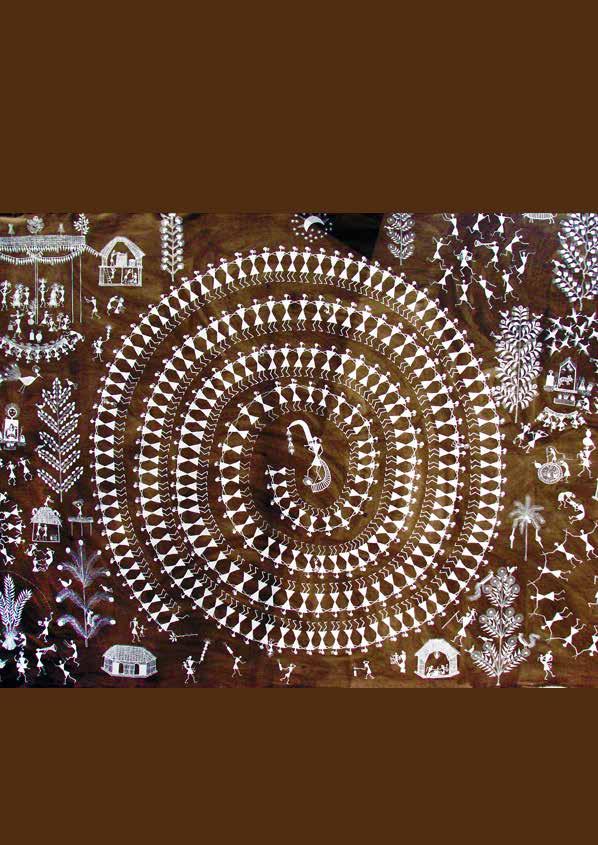

International Relations









Donate Now and Keep the Magazine Live in 2025
Live Encounters is a not-for-profit free online magazine that was founded in 2009 in Bali, Indonesia. It showcases some of the best writing from around the world. Poets, writers, academics, civil & human/animal rights activists, academics, environmentalists, social workers, photographers and more have contributed their time and knowledge for the benefit of the readers of:
Live Encounters Magazine (2010), Live Encounters Poetry & Writing (2016), Live Encounters Young Poets & Writers (2019) and now, Live Encounters Books (August 2020).
We are appealing for donations to pay for the administrative and technical aspects of the publication. Please help by donating any amount for this just cause as events are threatening the very future of Live Encounters.
Om Shanti Shanti Shanti Om
Mark Ulyseas
Publisher/Editor markulyseas@liveencounters.net

All articles and photographs are the copyright of www.liveencounters.net and its contributors. No part of this publication may be reproduced without the explicit written permission of www. liveencounters.net. Offenders will be criminally prosecuted to the full extent of the law prevailing in their home country and/or elsewhere.


April 2025
Perspective on International Relations presented in four indepth articles.
Why did I choose to study International Relations as a Field of Study?
Space Policy and International Relations Theory
The importance of Strategic Culture in my Research; The Intersection of Philosophy and Strategy
Eastern International Relations; the question of origin

Dr. Namrata Goswami is an author and educator specializing in space policy, international relations, and ethnic identity. Currently, Dr. Goswami teaches at the Schriever and West Space Scholar Programs, the School of Advanced International Studies, Johns Hopkins University, Thunderbird School of Global Management, Arizona State University, and at the Joint Special Forces University. She is a guest lecturer at Emory University for seminars on Technology, Society & Governance, and India today. She worked as a Research Fellow at MP-Institute for Defence Studies and Analyses, New Delhi; a Visiting Fellow at Peace Research Institute, Oslo, Norway; La Trobe University, Melbourne, Australia; University of Heidelberg, Germany; Jennings-Randolph Senior Fellow, United States Institute of Peace; and was a Fulbright Senior Fellowship Awardee. She was awarded the Minerva grant by the Office of the U.S. Secretary of Defense to study great power competition in outer space. In April 2019, Dr. Goswami testified before the U.S-China Economic and Security Review Commission on China’s space program. Her co-authored book, Scramble for the Skies: The Great Power Competition to Control the Resources of Outer Space was published in 2020 by Lexington Press; Rowman, and Littlefield. Her book on The Naga Ethnic Movement for a Separate Homeland was published in 2020 by Oxford University Press. She has published widely including in The Diplomat, the Economic Times, The Washington Post, Ad Astra, Asia Policy, Live Encounters Magazine, Cairo Review. She was invited in November 2019 to share about her life and her work at a Tedx event held at the Rosa Parks Museum, in Montgomery, Alabama. https://www.youtube.com/watch?v=5WPNdnahLaY
We all choose a field of study and work that is our passion. After all, that is what gives meaning to our lives. During the span of my career, I have been asked several times why I chose to study international relations. I could have been an artist, a fashion designer, a singer, an interior designer, or a travel reporter. There was a time when I seriously considered making wildlife films for channels like National Geographic and Discovery. All those alternative fields of study and work were among the variety of things I wanted to do, growing up. I however zeroed in on international relations as a field of study once I started my undergraduate education. The question is why.
I believe my passion for international relations started when I dived into a deep study of history, geography, political science, and philosophy once I joined college. However, the seed was laid in this mountain town where I grew up in northeast India. Haflong [that’s its name]. The idea of India and its pluralism is most visible in this town, which is like a mosaic of different ethnic communities and cultures. Located amidst the Barail mountain ranges of Northeast India, the town was small, but its landscape was grand. Moreover, the landscape had a timeless quality, connected as it were across international borders to the mountain ranges in Tibet, Burma, Thailand, Cambodia, Yunnan [China], with the rich civilizations that flourished in the river deltas of the Brahmaputra and the Mekong.
The Ahoms were known for their administrative system, which maintained a unique blend of governance mechanisms to cultivate and expand their kingdom amongst the local tribes. The king established a council of ministers, the institution of the village headmen, and an intricate mixture of an advisory council drawing from various local Assamese ethnic communities.
The folklore of the ethnic communities was rich with stories of distant lands that they immigrated from, and the words of these songs were deeply poignant, recalling the difficulties of long travel across treacherous yet ethereally beautiful mountain passes. Assam, the state in India, that my family originates from, was ruled by the Ahoms for 600 years (1228-1826), a minority ethnic community that immigrated in 1228 to Assam from Yunnan, China. The Shans inhabited the tracts between Upper Burma and Western Yunnan. The first king, Sukapha, who established Ahom rule in Assam, was a Shan prince from Mong Mao (present-day Yunnan, China). Sukapha crossed the Patkai mountain ranges in Burma (Myanmar) and established his reign[1] not only by superior military tactics but by a series of negotiations with the local tribes of Assam through his policies of assimilation. Wet rice cultivation, ubiquitous to Assam today, was introduced by the Ahoms. The Ahoms were known for their administrative system, which maintained a unique blend of governance mechanisms to cultivate and expand their kingdom amongst the local tribes. The king established a council of ministers, the institution of the village headmen, and an intricate mixture of an advisory council drawing from various local Assamese ethnic communities.
It was the Ahom military competence that they are best remembered for. Assamese recalling of history tells stories of valor and courage and military strategies that included a fascinating mix of guerilla and conventional warfare and fortifications of strategic locations. The Ahom army consisted of infantry, cavalry, a navy, and artillery.[2] Assam under the Ahoms deterred and defeated a Mughal invasion in the famous 1671 Battle of Saraighat, a largely naval battle, led by Ahom general Lachit Borphukan. The Ahoms succeeded due to their focus on good intelligence of the enemy, an ability to adapt and innovate on the battlefield, and their skill in developing a governance mechanism that sustained their kingdom. When these mechanisms became weak however, the Ahoms were defeated by the Burmese, from across the border, who in turn were defeated by the British in 1826 (colonial British forces), and Assam was then passed over to British colonial rule by the Treaty of Yandaboo in 1826.[3]
Growing up amid such a rich history, where ethnic communities immigrated from across the international borders between India and Burma, India and Tibet, India and China, India and Bangladesh, India and Bhutan, where folktales recalled tales of valor and despair, of inter-ethnic conflicts that ravaged the land, but also how communities found a way to live together despite that, established that seed in me and a hunger to understand why those tribes chose to immigrate, why they prided their independence, how a regional kingdom like the Ahoms defeated a pan-Indian empire led by the Mughals, and how stories of cultural assimilation and contact were sung every day despite the reality of ethnic conflicts.


https://www.cwgc.org/our-work/blog/lasting-tribute-to-fallen-soldiers-kohima-war-cemetery/
I heard stories in Nagaland about the Battle of Kohima (a town in Nagaland in Northeast India) where the British forces, in collaboration with local ethnic forces, defeated the Japanese. After defeating the British in Burma, the Japanese forces invaded northeast India and entered Kohima, Nagaland. In the Battle of Kohima, 15,000 Japanese forces fought with 1500 British-Indian troops for several weeks until reinforcement arrived.
As I carried all these stories with me, my travels within Northeast India, to the borders of India-Burma, India-China, and India-Bangladesh, brought another international dimension to my notice. The memories of how local ethnic communities participated in the Second World War. I listened to numerous historical stories, from which I learned about an American general named Joseph W. Stilwell, under whose directions, American engineers built the historic Stillwell Road [named in his honor by Chiang Kai-shek], a strategic military route connecting northeast India with Burma and onward to China.[4] One person who participated in the war recalled, “Stilwell, he was a tough one, building that treacherous road. We called it man-a-mile road, where we lost local construction workers every mile we built”.
I heard stories in Nagaland about the Battle of Kohima (a town in Nagaland in Northeast India) where the British forces, in collaboration with local ethnic forces, defeated the Japanese. After defeating the British in Burma, the Japanese forces invaded northeast India and entered Kohima, Nagaland. In the Battle of Kohima, 15,000 Japanese forces fought with 1,500 British-Indian troops for several weeks until reinforcement arrived. The battles were brutal, sometimes ending in hand-to-hand combat; if the Japanese forces won, then the invasion of British India was the outcome. After reinforcement arrived for the British-Indian forces, and with more than 7,000 casualties and no food left, the Japanese forces retreated.
According to military historian Robert Lyman, the Battle [of Kohima] “changed the course of the Second World War in Asia…The Japanese invasion of India, of which the Battle of Kohima was a significant part, was [their] first major defeat in the Far East,”.[5] And yet, the Battle of Kohima is known as a forgotten battle and failed to capture the imagination like Waterloo, D-Day, and other battles in Europe. Not only in Western retelling of World War II but also in Indian history, which at that time, was of course taken over by India’s fight for freedom from British Colonial rule. And yet, growing up amid these local and international narratives, with stories of Japanese bombers, of valor on all sides, Indian, British and Japanese, I was curious why these important battles were not part of the popular historical retelling, or why the people who gave their lives averting an invasion of India, was not even part of the celebration of India’s own history.
For me, understanding local stories and cultures motivated me to write a book on the Naga ethnic conflict, titled The Naga Ethnic Movement for a Separate Homeland: Stories from the Field,[7] which captures stories of ethnic conflict in northeast India, but my work also crossed borders into Burma and China, with a desire to bring to light the directly affected local population’s perspectives from Arunachal Pradesh on the China-India border issues, a state in northeast India that China claims in its entirety as its territory.
In 2013, the Battle of Kohima was the surprise winner of the greatest battle of the Second World War, defeating other battles like Waterloo and D-Day during a debate at the National Army Museum in London. When I traveled to Kohima, I went to the World War II cemetery there and the words that touched me deeply was this epitaph, that was there at the front gate as you entered the cemetery that stated, “When you go home, tell them of us and say, for your tomorrow, we gave our today”, an epitaph that was inspired by Simonides of Ceos statement to honor the Greeks who fell at the Battle of Thermopylae in 480 BC.[6]
The experience of growing up in an area surrounded by four international borders, the rich history of ethnic communities that were part of a larger Southeast and East Asian civilizational ethos, an ancient kingdom ruled by the Ahoms, who themselves immigrated from Yunnan, China, with roots with the Tai race in Thailand, the imposition of British colonial rule and the resistance to it, the impact of World War II, and then the entry of the post-colonial Indian state, created a curiosity in me to understand and examine the different impacts that these history had. I also had questions about how strategic culture emerged, why certain histories and narratives were privileged over others, for example, why the sacrifices of soldiers during the Battle of Kohima were forgotten, and how international relations theorizing missed such poignant tales of military history, strategy, warfare, and the impact of emotions, will and friction. For instance, I was intrigued by the variation in military strategy that the Ahoms adopted to deter and defeat different enemies and how their innovation and adaptability equipped their military to fight both guerilla warfare and conventional battles and defeat the empire-level Mughal military.
That is what motivated me to work towards a doctorate in international relations. More significantly, for me, I realized that to understand any nation’s adoption of certain foreign policies and/or space policy, it is vital to examine the different levels of complexity that inform such policies at the local, national, regional, and grand strategic levels. For me, understanding local stories and cultures motivated me to write a book on the Naga ethnic conflict, titled The Naga Ethnic Movement for a Separate Homeland: Stories from the Field,[7] which captures stories of ethnic conflict in northeast India, but my work also crossed borders into Burma and China, with a desire to bring to light the directly affected local population’s perspectives from Arunachal Pradesh on the China-India border issues, a state in northeast India that China claims in its entirety as its territory. [8] My work also highlights how strategic cultures and history affect the space policies that nations adopt to develop space capacities and establish themselves as Great Powers in the System. [9]

https://countercurrents.org/2018/06/brief-discourse-on-the-origin-of-naga-tribes/

Coins of Ahom Kingdom
https://en.wikipedia.org/wiki/Ahom_coinage#/media/File:Coins_of_Assam.png
My motivation is to make international relations more global, more capable of reflecting important narratives from across the world, improve its ability to explain events wherever they occur, to expand its knowledge base that accounts for hidden stories of great courage and military significance from strategic locations around the globe, to enhance its ability to go beyond and deeper from the state of the field as it was when I first chose to study it and to build and converge Western and Eastern knowledge bases that develop truly authentic international relations theorizing.
Disclaimer: The views expressed are those of the author and do not reflect the official guidance or position of the United States Government, the Department of Defense, the United States Air Force, or the United States Space Force.
[1] Dipak Kurmi, “Sukapha’s Visionary Journey to build the Ahom Empire in Assam”, The Sentinel, November 29, 2023, https://www.sentinelassam.com/more-news/editorial/sukaphas-visionary-journey-to-buildthe-ahom-empire-in-assam-678288
[2] “Tracing the Ahom Rule: The Ascendency and Decline in Northeast India”, The Sentinel, December 27, 2024, https://www.sentinelassam.com/north-east-india-news/assam-news/tracing-the-ahom-rule-theascendancy-and-decline-in-northeast-india
[3] Arup Kumar Dutta, The Ahoms: A Reimagined History (New Delhi: Harper Collins India, 2023).
[4] Phil Coomes, “The Stilwell Road 70 Years on”, BBC, August 10, 2015, https://www.bbc.com/news/inpictures-33785650
[5] Anbarasan Ethirajan, “Kohima: Britain’s ‘Forgotten’ Battle that Changed the Course of WWII”, BBC, February 13, 2021, https://www.bbc.com/news/world-asia-india-55625447
[6] The Kohima Epitaph and the Exhortation, March 26, 2013, https://support.britishlegion.org.uk/app/ answers/detail/a_id/155/~/kohima-epitaph-and-the-exhortation#:~:text=The%20Kohima%20Epitaph%20is%20the,Tomorrow%2C%20We%20Gave%20Our%20Today
[7] Namrata Goswami, The Naga Ethnic Movement for a Separate Homeland: Stories from the Field (Oxford: Oxford University Press, 2020).
[8] Namrata Goswami, “China’s Claims on Arunachal Pradesh: Local Perspectives”, IDSA Issue Brief, January 11, 2011, https://idsa.demosl-03.rvsolutions.in/publisher/chinas-claim-on-arunachal-pradesh-localperspectives/
[9] Namrata Goswami and Peter Garretson, Scramble for the Skies: The Great Power Competition to Control the Resources of Outer Space (Lanham: Lexington Press, 2020),

NASA, ESA, and the Hubble Heritage Team (STScI/AURA).
Space is a global endeavor. This is an important fact that needs to be internalized. Once a nation has developed its space capacities, it implies three things: an ability to launch to space; an ability to maintain a constellation of satellites in space, and an ability to utilize those assets for its national development, its military capacity, and its global power projection. As a result, when we even think about space forces, their ability to project power is global. Added to these aspects are those nations that go beyond satellites, to develop space missions that can go to the Moon and Mars with orbiters and landers, build space stations, and bring back samples from an asteroid. Those are the Great Powers. Space’s global character also means that the regulatory and normative frameworks for space governance have to be truly global in character.
I have written on how the space policy process unfolds. In that article, I define space policy as a process of developing, prioritizing, and implementing a plan of action developed by the government entity entrusted with the task. The first stage is problem identification, the second stage is policy formulation, the third stage is policy adoption, the fourth stage is policy implementation, and, finally, policy evaluation.
Western classical realists like Hans Morgenthau, Reinhold Niebuhr, and Eastern classical realists like Kautilya, and Sun Tzu, all believe that norms and moral judgment have to be based on prudence. There is unity in classical realist thinking that the actions of the state, if based on moral legitimacy, create support and advance the goals of that state even more broadly. However, the goal of the state is selfaggrandizement and expansion of its power, regime structure, and value system.
[1] However, space policy occurs within the context of how Great Powers, Middle Powers, and Emerging Powers in space, develop their space programs, what missions they prioritize, and what capacities they aspire to develop. The end goals of space policies matter, meaning the goals nations set for themselves. In this, I argue that current international relations theorizing can explain some of the variations in the process of how space affects foreign policy, military strategy, civilian capacities, and power projection.
The four theories I utilize in this article are realism, liberalism, constructivism, and critical theory. I chose these four theories because they provide a sound foundational basis for explaining state actions, motivations, and how these theories would view the development of space policy.
For realism, the principal actors in the international system are states. States, in this construction of reality, are focused on their security, and national interests and struggle for relative power advantage in the system. Realists are skeptical of the power of norms, especially those who are of the classical variety. Western classical realists like Hans Morgenthau, Reinhold Niebuhr, and Eastern classical realists like Kautilya, and Sun Tzu, all believe that norms and moral judgment have to be based on prudence. There is unity in classical realist thinking that the actions of the state, if based on moral legitimacy, create support and advance the goals of that state even more broadly. However, the goal of the state is self-aggrandizement and expansion of its power, regime structure, and value system. Within Realism, there are defensive and offensive realists as well. Defensive Realists argue that states are security-seeking, and focus on ensuring that they maximize their security and address uncertainties, especially those that can lead to a security dilemma. In space policy, for instance, defensive realists would assert that the U.S. and China can engage in cooperation in space by removing the uncertainties that could plague their space programs. Moreover, in their perspective, since states are security-seeking and not looking to dominate, once we address those insecurities, everything will be well. But then there is offensive realism that argues that states are power-seeking, aspire to different versions of what an international order led by them would result in, and are not motivated to engage or collaborate in meaningful ways but instead compete to get maximum relative power. Moreover, U.S. efforts to engage China, including such efforts as the G2 are viewed by China as attempts by the U.S. to drag China and the Communist Party of China (CPC) into a West-led international order,[2] where China will play second fiddle.
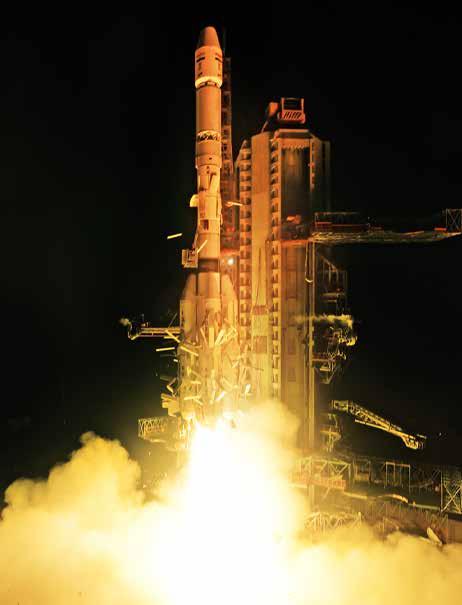
ISRO - GSLV-F15 / NVS-02 MISSION- Launched on: January 29, 2025.
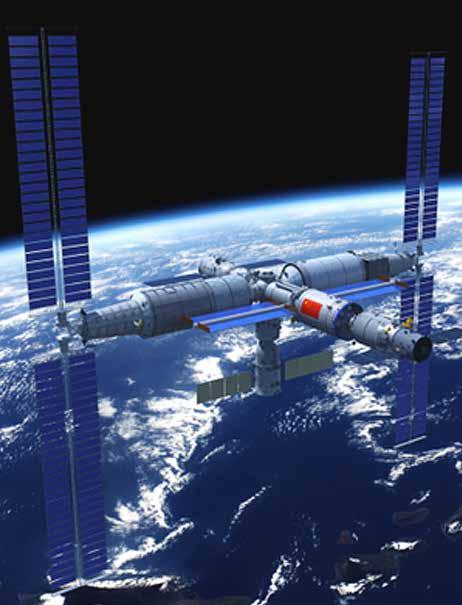
In terms of space policy, we witness this in the way Great Powers like the U.S. and China are framing their development of permanent presence on the Moon. Or how India, vying for Great Power status, is starting to conceptualize space as a vital critical infrastructure and forwarding an Indian philosophical and grand strategic understanding of space; specifically, how India’s achievements in space, including going to the Moon being a benefit that India would bestow to the world.
This includes China’s space policies and goals. From an Offensive Realist perspective, states compete for dominance and will very rarely accept a cooperative compromise that does not forward their value system and goals. In terms of space policy, we witness this in the way Great Powers like the U.S. and China are framing their development of permanent presence on the Moon. Or how India, vying for Great Power status, is starting to conceptualize space as a vital critical infrastructure and forwarding an Indian philosophical and grand strategic understanding of space; specifically, how India’s achievements in space, including going to the Moon being a benefit that India would bestow to the world. China, especially the CPC, also has a very similar narrative about China’s investments in space as a contribution to the Chinese way of civilization ethos and the Chinese dream, where Chinese values dominate. When we draw our gaze to realist thinkers like Sun Tzu and Kautilya, the strategic and philosophical are always interweaved into their administrative manuals for how the state could develop its capacities for optimal tactical and strategic advantage. For Kautilya, it was Yogokshema or the welfare of the people that a king always had to keep in mind; for Sun Tzu, the commander of the armies should not only have intelligence-based operations but must have the moral high ground. However, ultimately, the self-aggrandizing state, under a competent ruler, was what they both favored. In some sense, Machiavelli also had similar advice for the Medici, on how to wield power and when to use it, and how the ruler has to develop competencies. All these three thinkers played the role of advisors, hoping that their advice was heeded, by the King, amongst many others. Realism has a rich tradition of assessing and examining human nature and does have one of the best theoretical explanations of state action, once you broaden its strategic and philosophical base.
The second international relations theory that impacts how space policy is conceptualized is liberalism. Gandhi was a foremost liberal thinker who believed that we can change human behavior by focusing on their world views. He argued that this can lead to the transformation of the human spirit. This is how he saw India’s independence movement against British colonial rule that ravaged India for nearly 200 years (1757-1947). For Gandhi, it was not the British that was the issue; it was their worldview that enabled this kind of inhuman exploitation of another society. Liberalism believes in the emancipation of the human spirit, and that we can transform human motivations and incentives for a better future. This can be done by building cooperative institutions, engaging in dialogue that can develop meaning together, and that differences do not necessarily result in violent conflict. Bargaining and negotiations for common norms, treaties, guidelines, and standard operating principles can be developed in international relations for states to function well. Like realism, liberalism does believe that the state is the prime actor in the international system.
This theoretical framework has faith in the ability of institutional collaborative structures to mitigate competition and enable collaboration. Regarding space policy, it would mean enhancing treaties like the 1967 Outer Space Treaty, establishing norms around responsible behavior in space, building ethical standards on how space exploration should be conducted, and the importance of discussions at the level of the United Nations on the issue of utilization of space resources. For liberalism, conflict is not inevitable in the international system because collaborative structures can help resolve violent differences. Michael Walzer, a theorist on Just War, argues that normative frameworks like Just War that offer key principles on what is a just cause of war, and on issues of proportionality and discrimination, offer framing guidance to address and mitigate conflicts. There are deep philosophical traditions across Asia, Africa, and indigenous communities in Latin America that have developed sophisticated systems of thought to address the complexities around how conflicts can be avoided.
Then there is constructivism, which argues that international relations are shaped by social factors like ideas and interactions and not so much by material factors like power differentiation, military forces, and economic development. Constructivism focuses on the agency of individual actors in shaping international events. Reality, in the Constructivist worldview, is socially constructed and not materially determined, by the meaning one attaches to them. For instance, about space, an anti-satellite weapon, if acquired by the United Kingdom, would not be seen as such a threat, by the United States, as the ASAT capability acquired by China in 2007. The material power of both those ASATs is the same, but then the whole story changes regarding the intention of why those states have them, and critically, who has them. For constructivists, states assume identities based on their interactions with other states in the system. And then those constructed identities create interests and the agendas that states adopt. This can be observed in how Great Powers, Middle Powers, and Emerging Powers view space policy and the capacity it brings. A Middle Power is focused on how it can influence the Great Powers and their space policies; a Great Power is interested in how its investments in space, either maintain or expand its overall security or power and influence in the international system. Constructivists give value to social norms and the logic of appropriate behavior. Norms, to be effective, have to be adopted by a majority of states, for instance, space norms like responsible behavior concerning how space can be kept free of weaponization, or a space norm around a mortarium on ASAT weapons.
In terms of norms and space policy and behavior, ideas like responsibility, a guide to state behavior, and the movement toward building universal codes of conduct in space will be challenged by critical theorists. In their reflection, they would argue that “whose norms are we talking about here, really?”, and whose hidden hegemonic agenda is being served by these efforts towards a code of conduct in space?
These three international relations theories can offer explanations on state actions and adoption in regard to certain space policies. Finally, of course, there is critical theory. The two Western philosophers who influenced critical theory were Immanuel Kant and Karl Marx, both philosophers. Critical theorists view international relations through a perspective of a deep-seated interplay between state, sub-state, and non-state forces that intersect in the cultural, economic, and social spheres. Robert Cox, for instance, challenged the universalist assumptions behind realism and liberalism by stating that the question we should ask is what theory, why, and for what purpose? He stated that “theory is always for someone and for some purpose’.[3] The idea of emancipation as a universal ideal is challenged, and instead critical theory argues that we need to shed light on how such an abstract universal idea can exclude, and create legitimate political arrangements that can be deeply hierarchical. We also should examine how some races, genders, and other identities are deliberately excluded by realism and liberalism’s privileged systems of international order. Andrew Linkletter and Robert Cox both believe that inter-state relations can neither be understood nor explained without understanding the social forces that shape them. There are no absolute truths. This is very Gandhian, given Gandhi’s reflections on truth and his philosophy that we all have our path to our unique truths. Critical theorists argue that the present international order has been brought into existence by powerful state actors with vested interests and therefore is deeply unequal, when we think about the knowledge systems, the university systems, and the groups of communities, it privileges to the sheer neglect of other sources of knowledge. Andrew Linkletter, for instance, sheds light on the idea of citizenship, whose citizen we are, the inherent limitations that coerce humanity into, and the entitlements it brings to some states over others. To Linkletter, citizenship has divided people into national communities and therefore has created a deep-seated obstacle to the emergence of a truly global consciousness.[4] I argue that recognizing the limitations and requirements imposed by a security-maximizing or power-maximizing state is something that could broaden the depth of critical theory, which some critical theorists recognize.[5]
In terms of norms and space policy and behavior, ideas like responsibility, a guide to state behavior, and the movement toward building universal codes of conduct in space will be challenged by critical theorists. In their reflection, they would argue that “whose norms are we talking about here, really?”, and whose hidden hegemonic agenda is being served by these efforts towards a code of conduct in space? This was what played out during the discussions on developing a European Code of Conduct for Outer Space, developed in 2008 and amended in 2010.
...EU Code of Conduct in space, while being inclusive in its process of consultation, had already arrived for these discussions, with a draft core code already written, thereby framing the consultative discussions in a particular way. This, most Global South, countries felt, was a fait accompli.[6] Medha Bisht and I have written a piece on space norms and international relations theory that highlight some of the issues with norm generation.[7]
The effort however failed in 2011 due to the resistance of the Global South countries who argued that a Code of Conduct without legal enforceability is meaningless. Moreover, the nations, during the negotiation process, stated that such an EU-originated Code of Conduct could limit their space activities and tie them to processes that could prove detrimental to their societies. Countries like China, Brazil, and India indicated that such a code of conduct might diminish the global effort toward an actual treaty that would be required to prevent an arms race in space. Countries clashed on the issue of self-defense, which the code identified as an exception to the use of force. Moreover, as is the case with almost all conversations and drafts that are utilized to start such normative conversations, the EU Code of Conduct in space, while being inclusive in its process of consultation, had already arrived for these discussions, with a draft core code already written, thereby framing the consultative discussions in a particular way. This, most Global South, countries felt, was a fait accompli.[6] Medha Bisht and I have written a piece on space norms and international relations theory that highlight some of the issues with norm generation. [7]
Disclaimer: The views expressed in this article are those of the author and do not reflect the official guidance or position of the United States Government, the Department of Defense, the United States Air Force, or the United States Space Force.
[1] Namrata Goswami, “Space Policy: Why a Step-by-Step Plan Matters”, The Space Review, March 27, 2023, https://www.thespacereview.com/article/4554/1#:~:text=Namrata%20Goswami%2C%20Ph.,the%20Resources%20of%20Outer%20Space.
[2] Michael Beckley, “The Flaws of Defensive Realism and the False Promise of Re-engaging China”, Johns Hopkins University, SAIS, n.d., https://sais.jhu.edu/kissinger/programs-and-projects/kissinger-center-papers/ flaws-defensive-realism-and-false-promise
[3] Robert W. Cox, “Social Forces, States and World Orders: Beyond International Relations Theory”, Millennium: Journal of International Studies, 10/2, 1981, https://journals.sagepub.com/doi/abs/10.1177/03058298810100020501
[4] Andrew Linklater, Critical Theory and World Politics Citizenship, Sovereignty and Humanity (London and New York, Routledge, 2007).
[5] Marcos Ferias Ferreira, “Introducing Critical Theory in International Relations”, E-International Relations, February 18, 2018, https://www.e-ir.info/2018/02/18/introducing-critical-theory-in-international-relations/#google_vignette [6] “Code of Conduct on Space Activities: Unsolved Critiques and the Question of its Identities”, Foundation for Strategic Research, n.d., https://www.frstrategie.org/en/publications/notes/code-conduct-space-activitiesunsolved-critiques-and-question-its-identity-2015
[7] Medha Bisht and Namrata Goswami, “Can Outer-Space Norms be Universal: Conversations with International Relations Theories”, Social Science Research Network, December 2, 2024, https://papers.ssrn.com/sol3/papers.cfm?abstract_id=4965688

Image: A 16th century copy of the Arthashastra written in the Grantha script was discovered in the archives of the Oriental Research Institute (ORI), University of Mysore by Rudrapatna Shamasastry. He published it in 1909.
Strategic culture, as I define it, is a nation’s assumptions about its threats and opportunities. We utilize the term strategic because in an analysis of culture within a strategic context, what we are looking for is how that society anticipates and innovates to create ideational and physical attributes that build advantages for itself. This kind of culture is strategic because it takes into account the nation’s industrial base, its education system, its demographic, its system of government, its military, and its commercial sector to build a grand strategic vision of where that state wants to be, what it wants to accomplish, who it wants to partner with, and whose ideology and state system, it wants to deter. There are deep-seated philosophical overtones and undertones in a nation’s strategic culture. Strategic culture includes a nation’s multiple traditions, its history, its values, its political identity, and vision of the future. Within one nation, there could be multiple different strategic cultures that influence it deeply. In my research on space policy and the Great Power Competition, I discovered that nations like China, the U.S., Japan, and India valued particular traditions, histories, and visions of themselves and why space formed a vital part of who they thought and wanted their societies to be.
China has its deep-seated tradition of a strategic culture. The development of strategic thinking, on how it viewed and perceived threats and opportunities, was deeply ingrained in several of its ancient texts and histories, the most famous being Sun Tzu and Lao Tzu; one an advisor on military strategy; the other offering deeply philosophical considerations of how to be.
India, for instance, prided itself in its scientific prowess from its ancient past, in the field of astronomy, visions of space warfare and specialized weapons systems, the multiple strategies its ancient kingdoms adopted to navigate threats and opportunities, lessons from its history and its failed attempts at thwarting several foreign invasions and occupations, the most famous of them being the Mughal and British empires, and the importance of science and technology. Space, as a result, formed a part of that ancient and current vision; with India now aiming to send humans to the Moon, and developing capacities for inter-planetary missions.
China has its deep-seated tradition of a strategic culture. The development of strategic thinking, on how it viewed and perceived threats and opportunities, was deeply ingrained in several of its ancient texts and histories, the most famous being Sun Tzu and Lao Tzu; one an advisor on military strategy; the other offering deeply philosophical considerations of how to be. Sun Tzu’s Art of War offered a comprehensive strategy on how to prepare for threats and opportunities. Sun Tzu believed five factors affect one’s deliberations on war and strategy. This included the moral law (philosophy); Heaven and Earth (the conditions), the Commander (leadership), and method and discipline. The moral law in Sun Tzu’s perspective is what causes people to follow their ruler to their death; heaven signifies night and day and the seasons; Earth signifies the geographic conditions, for instance, distances, landscape, and terrain; the commander stands for values like wisdom and benevolence, courage and a strict bearing, and method and discipline meant maintaining an army, the logistics, and control over military expenditure. Note how Sun Tzu prioritizes the qualities of the ruler and the commander (philosophy) with what it can encourage to achieve particular outcomes (strategy). There is a boldness in Sun Tzu’s belief in his wisdom. Notice this statement, “the general that hearkens to my counsel and acts upon it, will conquer: let such a one be retained in command! The general that hearkens not to my counsel nor acts upon it, will suffer defeat: -let such a one be dismissed”.
[1] Interestingly, Sun Tzu’s focus on the moral law, and if rulers possess that law, will generate immense loyalty from their subjects, is similar to how Herodotus explained Spartan bravery vis-à-vis the Persians in his history of the Greco-Persian wars. Herodotus indicated that the Athenians took inspiration from their democracy that generated equality and meritocracy; the Spartans from their immense adherence and obligation to the law. Herodotus argued that there were unique Greek cultural traits that enabled them to defeat a much larger Persian army.[2] And we have all learned about the famous Melian Dialogue on how the Athenian generals decided to sack Melos for the larger good of Athens, in Thucydides’ Peloponnesian War. [3]

A copy of The Art of War written on bamboo. It is part of a collection at the University of California, Riverside.

Reconstructed map of the world based on the writings of Herodotus. Wikipedia.
The connection of cause and effect is an integral part of Hindu and Buddhist philosophy. In the Indian epic, Mahabharata, the intricate complexity of duty (dharma), niti (policy), values (just war), what is proportionality in war, military strategy, the making of alliances, the importance of intelligence, deception, tactical maneuvers in war, the ultimate weapon which is envisioned as the Brahma Astra, capable of ultimate destruction, a weapon of last resort, and that which cannot be easily deterred, are all discussed in great depth.
Lao Tzu’s Tao Teh Ching offers wise counsel on how to navigate through life by practicing certain principles of what he calls, the way or the Tao. This Tao aims to be in accord with how the universe works itself, a balance, but also an ability to restrain and understand the true meaning of life. For instance, think of this counsel from the book. “if we stop looking for persons of moral superiority, to put in power, there will be no more jealousies among the people”, or “by not prizing things hard to get, you will cause the people to cease robbing and stealing” or “the universe is everlasting. The reason the universe is everlasting is that it does not live for self. Therefore, it can long endure”. [4] There is a timelessness to this kind of thinking that affects strategic culture. In Indian strategic culture, there is that dimension of timelessness as well as there is the notion of fate and destiny; that even if you try hard as an individual to change fate, your destiny is pre-determined. Therefore, while strategic culture is a consequence of cause and effect, and the examination by the elites of society as to the threats and opportunities their nations could face, the cultural uniqueness of different societies, their philosophical traditions, and their exaltation of certain values has a deep impact on how they constitute themselves in terms of governance mechanisms.
The connection of cause and effect is an integral part of Hindu and Buddhist philosophy. In the Indian epic, Mahabharata, the intricate complexity of duty (dharma), niti (policy), values (just war), what is proportionality in war, military strategy, the making of alliances, the importance of intelligence, deception, tactical maneuvers in war, the ultimate weapon which is envisioned as the Brahma Astra, capable of ultimate destruction, a weapon of last resort, and that which cannot be easily deterred, are all discussed in great depth. To activate the Brahma Astra, a warrior had to be equipped with the knowledge to do so. A few warriors in the mythology could invoke the Brahma Astra, and they included Arjuna, Krishna, Karna, Ashwatthama. Once a Brahma Astra was invoked, it was only another Brahma Astra that could potentially deter it, but that would depend on the strategy utilized, not dissimilar from the modern understanding of nuclear strategy (either by denial or punishment).[5] Complete knowledge of the weapon could equip someone with the ability to stop it. That kind of mythology is fascinating because it invokes concepts of total war, but also the importance of limitations and just war especially around issues of non-combatant immunity and discrimination. The idea of Dharma Yuddha (Just War), especially the importance of a just cause and ethical principles in how a war is fought, is highlighted. That did not mean, however, that the laws of war were paramount, and a king had to strive to follow them.[6]
Interestingly, the famous Indian book, the Bhagavad Gita, was a treatise on the conversation between Krishna and Arjuna, right before the start of the battle of Kurukshetra, from the Mahabharata. Through this dialogue, Krishna convinces Arjuna that it was Arjuna’s duty (dharma) to fight in this righteous war, convincing Arjuna that not fighting this war will cause true harm, specifically by not fighting an unjust enemy (the Kauravas) when called upon to do so.
The Mahabharat is filled with deception and strategic overreach by both sides in the battle. Interestingly, the famous Indian book, the Bhagavad Gita, was a treatise on the conversation between Krishna and Arjuna, right before the start of the battle of Kurukshetra, from the Mahabharata. Through this dialogue, Krishna convinces Arjuna that it was Arjuna’s duty (dharma) to fight in this righteous war, convincing Arjuna that not fighting this war will cause true harm, specifically by not fighting an unjust enemy (the Kauravas) when called upon to do so. Critically, it’s the end state of moral quality that the war seeks, and Krishna highlights that without offering much detail on how the war should be fought. Ultimately, what mattered was that the Pandavas should triumph.[7] An interesting similarity exists between the dialogue of the Bhagavad Gita and the Melian Dialogue from the Peloponnesian War in which the two Athenian generals Kleomedes and Tisias negotiated with the representatives of Melos for its surrender to Athens. Both sides negotiated on issues of justice, with the envoys of Melos stating that Melos should be allowed to remain independent and neutral, as was the natural law of justice for smaller states. The two Athenian generals concluded that it was in the interest of Athens to ensure submission of Melos to Athens’s power, not only to improve its image but also to ensure that other smaller states do not rebel against Athens and/or desire to be neutral in the war between Athens and Sparta.[8] In China, we have a rich discourse on issues of morality, a good life, righteousness, wisdom, loyalty, and meritocracy between philosophers like Confucius, Mencius, etc. I found this book titled The Intellectual Foundations of China by Frederick Mote a good primer on the philosophical and strategic foundations of Chinese thinking and what it means to live an examined life.[9]
These critical dialogues that shape a society’s philosophical and strategic outlooks uniquely inform my research on how countries like the U.S., China, India, Russia, Luxembourg, and UAE decided what space goals they wanted to pursue. In deciding why space is important as an investment, unique strategic cultures, systems of governments, economic resources, and education level play a vital role. Strategic culture includes, for instance, in China, the idea of how the Moon is important to China’s sense of identity, culture, and military value; for India, it represents an ancient civilizational connection; for the U.S., space, as an unknown frontier, is connected to the idea of that entrepreneurial American spirit, that defies all odds and masters and/or anticipates the conditions of life, challenges, and opportunities, that a frontier like space would throw up. Investments in advanced technologies like space also have significant military benefits, especially for the ability of nations to use that technology to take advantage of opportunities and/or deter threats to its values, political system, commerce, and homeland through the intelligence that can be generated by space assets.
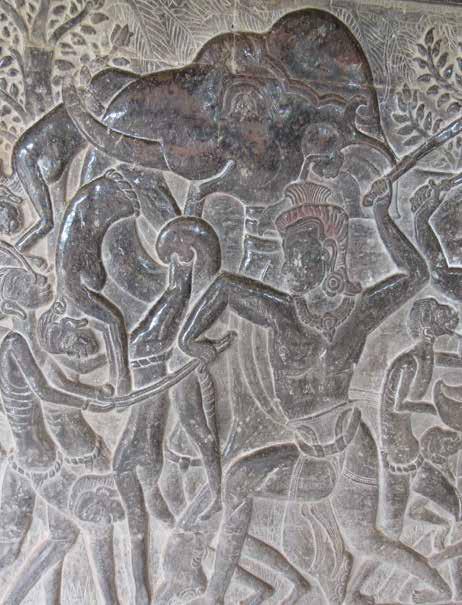
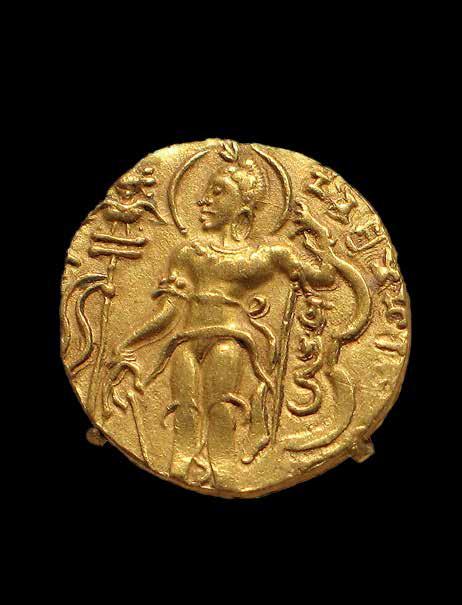
Gold Coin Showing King Chandragupta II as an Archer. Gupta Period ca. 376–414. https://www.metmuseum.org/art/collection/search/39406
However, in understanding and examining strategic culture, one has to develop a method of taking insights from a plethora of interdisciplinary studies but also from fieldwork. Understanding how elites in a particular society make its decisions requires assessments of the location of the nation they belong to, the history, the societal capacity for innovation, the educational system, as well as the political system that is in place. I find strategic culture, the intermix of philosophy and strategy, as vital to understanding the deeper intersections of how nations behave, why they have a certain identity, what their populations prize, and why they differ from each other. It is also important to realize that a society’s philosophical outlook, religious values, societal mores, and political culture influence what that society will prize, and what will it focus on in terms of its societal culture. To examine that deeply and understand how a particular society organizes itself adds to the elegance of any research on international relations.
Disclaimer: The views expressed in this article are those of the author and do not reflect the official guidance or position of the United States Government, the Department of Defense, the United States Air Force, or the United States Space Force.
[1] Sun Tzu, The Art of War, translated by Lionel Giles, https://classics.mit.edu/Tzu/artwar.html
[2] Herodotus, The Histories, translated by G.C. G. C. Macaulay, https://www.gutenberg.org/files/2707/2707h/2707-h.htm
[3] Thucydides, The History of the Peloponnesian Wars, translated by Richard Crawley, https://www.gutenberg.org/files/7142/7142-h/7142-h.htm
[4] Lao Tzu’s Tao Teh Ching, A Parallel Translation Collection, Compiled by B. Boisen, https://www.bu.edu/religion/files/pdf/Tao_Teh_Ching_Translations.pdf
[5] Michael J. Mazzar, “Understanding Deterrence”, n.d., https://www.rand.org/content/dam/rand/pubs/perspectives/PE200/PE295/RAND_PE295.pdf
[6] Mathew Kosuta, “Ethics of War and Rituals: The Bhagavad-Gita and Mahabharata as Test Cases”, Journal of Military Ethics, 19/3, 2020, pp. 186-200, https://www.tandfonline.com/doi/pdf/10.1080/15027570.2020.1824578
[7] The Bhagavad Gita, https://www.gutenberg.org/files/2388/2388-h/2388-h.htm
[8] Melian Dialogue, https://www.nku.edu/~weirk/ir/melian.html
[9] Frederick W. Mote, The Intellectual Foundations of China (New York: McGraw Hills Humanities, 1988).
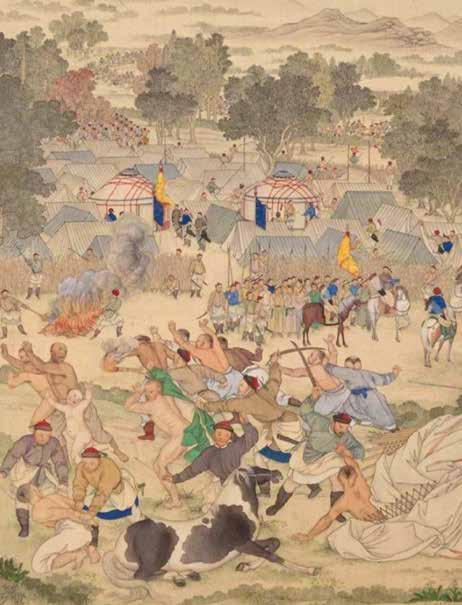
The Dzungar genocide was the mass extermination of the Mongol Dzungar people by the Qing dynasty. Wikipedia.
International relations, as a discipline, emerged for the first time in the 1920s, tracing its roots to World War I. There was a growing hunger to devote time and money to study the archives of Germany and Russia that were opened at the war’s end, demanding scholarship with discipline that could explain why nations engaged in such a war and for what purpose. [1] These studies focused on the alliances that existed before the war, the nature of diplomacy, and military strategy. Books like those penned by Sidney Bradshaw Fay’s The Origin of the World War; Arnold J. Toynbee’s The World After the Peace Conference, and Winston Churchill’s The World’s Crisis (1923-29) made remarkable contributions to aspects of what happened before, during and after that European originated war. Within the discipline of international relations, there was a growing movement to study the causes of war in all its dimensions: social, economic, political, and psychological. At that time, we had new organizations like the League of Nations that were established. The onslaught of the Second World War and the impact of ideas like nationalism, colonialism, the state of racial minorities, the strategic aspects of international relations, the militaryindustrial complex, and the implications of economic inequalities galvanized the discipline in the West. Harold Laswell analyzed the psychological aspects of symbols, images, and perceptions and their impact on world politics; others like Quincy Wright, E.H. Carr, Nicholas Spykman, developed the idea of power politics in international relations.
If one looks deeply at the works of the ancients, be it in Greece, China, or India, thinkers like Thucydides, Socrates, Kautilya, Sun Tzu, or even the dialogues on strategy, justice, values, religion, philosophy, laws that should govern a ruler, the importance of rules of war or just war, the conduct of war, there is a lot in common across the societies of the East and the West.
The advent of nuclear weapons and its impact on power projection and military strategy added a new dimension to this discipline. Henry Kissinger, Hans J Morgenthau, Arnold Wolfers, and others highlighted the importance of national interest and the balance of power in the international system, as well as dwelling on human nature. States were key in this study. The field of area studies in international relations developed after the Second World War, specifically to understand how regions will respond to the new Cold War. The United States took the lead in this regard. We also saw this chasm in terms of methodology in the 1950s between those who believed the focused small quantitative studies could offer precise ‘natural science’ like precision in developing explanations for human behavior and those who argued that such a methodology is fundamentally unsound.[2] Precision was sought after, for instance, through concepts like nuclear deterrence and game theory, Computation added a lot to that kind of analysis. However, the weaknesses of such methods were clear as none could envisage the largest change in the system that occurred: the end of the Cold War and the collapse of the Soviet Union.
If you notice the frame of conversation above, you will notice that all of these concepts in international relations developed either in the U.S. or in Europe. Given that, all nations including those that were colonies of Europe were coerced to participate both in events that were none of their making, like the First World War [think India], or assimilate to the theories of International Relations that were of Western origin. So much so that even those who try to argue for a new origin for international relations feel most at ease in juxtaposing it vis-à-vis the West; hence the phrasing: non-western International Relations. It is as if sub-consciously, if we do not address the development of thought processes, outside of Western origin, by locating it in connection to the dominant thinking in Western International Relations, we would fail to be noticed in the larger discipline of international relations. This phrasing and framing is flawed as it falsely creates a division between Western and so-called non-Western international relations because in reality there is none. If one looks deeply at the works of the ancients, be it in Greece, China, or India, thinkers like Thucydides, Socrates, Kautilya, Sun Tzu, or even the dialogues on strategy, justice, values, religion, philosophy, laws that should govern a ruler, the importance of rules of war or just war, the conduct of war, there is a lot in common across the societies of the East and the West. Therefore, to juxtapose something as non-western promises a completely new way of thinking about international relations, which is not the case, when one looks at the evidence.

China-Myanmar international border. Wikipedia.

The non-Western international relations framing descend into negative connotations of being ignored by Western international relations, the dominant perspective in IR. A better framing is Eastern International Relations, which will prepare future students of international relations to deal with the emerging world better, where ideas from the East and the West, from Africa to Papua New Guinea have always collided, debated, and emerged with levels of wisdom drawn from different roots.
Instead, I believe a better way of framing a discourse on International Relations, is to locate the origin of the ideas around peace and war, military strategy, community, inter-ethnic dialogues, strategic cultures, histories, let’s say, drawn from China, India, Japan, Southeast Asia, is to call it by an empowering name, Eastern International Relations. The non-Western international relations framing descend into negative connotations of being ignored by Western international relations, the dominant perspective in IR. A better framing is Eastern International Relations, which will prepare future students of international relations to deal with the emerging world better, where ideas from the East and the West, from Africa to Papua New Guinea have always collided, debated, and emerged with levels of wisdom drawn from different roots.
Eastern International Relations offers international relations several ways of thinking about this global field which is not that dissimilar from the way Western origin thinkers have thought about the field. Below are some of the themes I can draw from Indian, Mongol, and Chinese thinking.
Within Indian and Chinese thinking, there are well-developed concepts and strategies on how a state can expand its territories and influence. Kautilya’s The Arthasashtra offers us the concept of the Mandala (concentric circles), where the king is advised to either maintain his kingdom (status quo) or expand (extend his kingdom). Bordering states tend to compete as they jockey for influence and power, and either one or the other could become a vassal state, paying tribute to the all-powerful state. The Mandala theory can be represented through concentric circles with the king whom Kaulitya is advising at the center, circled by allies, antagonists and enemies. To extend his power, the king can use overwhelming military force, but can also utilize moral, economic, and ideological power. This could be the development of trade routes, new settlements, forts, and infrastructure works like roads and irrigation. In terms of foreign policy, there are the Madhyama or the Middle Kingdom, who share borders with the all-powerful state but also with the enemy and can hold the leverage to tilt the balance, in favor of one or the other. Then, there is the Mitra or ally who shares a border with the Ari (enemy) but not with the all-powerful state, which is an asset to the latter as it extends its power. There is the Ari or the adversary, who shares borders with the powerful state and has the resources and talent to challenge its extension.
Major texts from India and China have a lot to say about the idea of a Just War. Both Kautilya and Sun Tzu insist that a king has to have a moral high ground in order to expand his state and its power. Kautilya states that the king has to be viewed by his subjects as working for their welfare and is benevolent. There have to be laws for a kingdom to flourish, specifically for its subjects to acquire wealth.
The all-powerful state (Vijigishu or conqueror) has to base its strategies on sound intelligence of who it is dealing with. Kautilya offers in-depth foreign policy strategies on how to deal with different constituents, in his estimation, about 72. There are six tools of foreign policy called Sadgunya and four methods of control. [3]
Similarly, in Chinese thinking, the expansionist state has to utilize several strategies to expand its power and influence, chief among which is an intelligence-based understanding of the enemy, a knowledge that the enemy state adapts to the expanding state’s strategies and strength, and execute deception; appear weaker than it is, to influence the target state’s strategies. Sun Tzu, for instance, placed a heavy emphasis on deception, strategic patience, the ability to utilize terrain to the powerful state’s advantage and to gain the lead by a show of strength, not by actual fighting. In Chinese strategic thinking, a civilized state does not engage in war; it wins by superior strategy and the most superior is to get the enemy state to capitulate without fighting. The Art of War, which Sun Tzu wrote over 2, 500 years ago, is one of the earliest works of military strategy and culture that exists in the world today. In the third chapter of Sun Tzu titled, “Attack by Stratagem”, it states that “supreme excellence consists in breaking the enemy’s resistance without fighting”. In this, one can get insights into alliance building, military strategy, tributary systems, and political culture. The Mongols, brought their version of military warfare, tactics, and their doctrine of assimilation into an occupied territory, in this case, China.
Major texts from India and China have a lot to say about the idea of a Just War. Both Kautilya and Sun Tzu insist that a king has to have a moral high ground in order to expand his state and its power. Kautilya states that the king has to be viewed by his subjects as working for their welfare and is benevolent. There have to be laws for a kingdom to flourish, specifically for its subjects to acquire wealth. For Sun Tzu, in his chapter on “Laying Plans”, the art of war is governed by five constant factors: The Moral Law, Heaven, Earth, The Commander, Method, and discipline. Sun Tzu accords a lot of importance to the Moral Law. As per Sun Tzu, when the soldiers fight for justice, they exhibit courage, morale, loyalty, and a willingness to die for the cause.[4] We see such arguments in Mongol and Japanese concepts of warfare as well. It is insightful to see how both China and India are utilizing their ancient theories of foreign policy, war, and peace to tell the world how they interpret contemporary events.
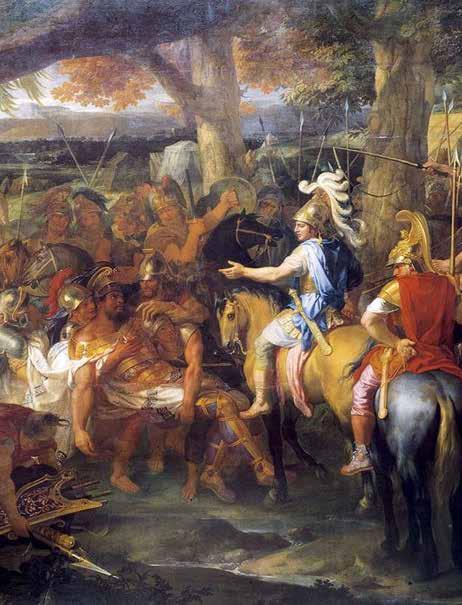
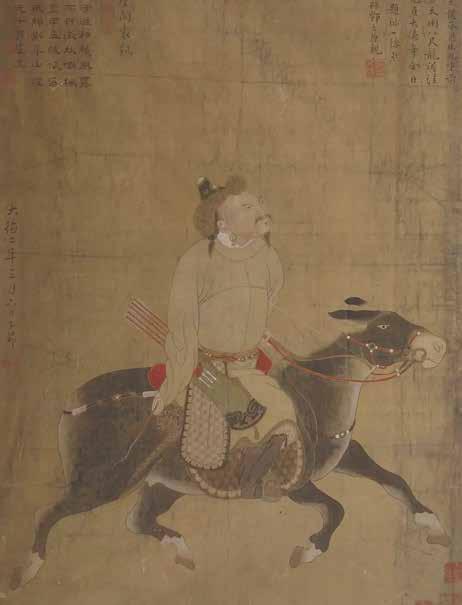
One such military alliance was the one they built through religious diplomacy with medieval Europe (different Popes) during the reign of Kublai Khan. The emissary we all know that is credited to have made that possible was Marco Polo, an emissary from Venice to the Mongol court of Kublai Khan, at a time (1275), when Kublai Khan ruled over China as the founder of the Yuan dynasty.
For instance, PLA Lieutenant General He Lei, former Vice President of the Academy of Military Sciences, utilizes Sun Tzu to explain how China might behave today. He indicates that China’s policies on Taiwan are informed by Sun Tzu’s conception of the Art of War and ideas of Just War. In India, there are academic efforts and policy push to utilize Kautilya and the Mahabharata to explain India’s contemporary international behavior. [5]
There is rich literature on military strategy and how to build alliances in Eastern international relations. Kautilya indicates that the first step of his six-fold foreign policy is peace which means entering into a peace agreement with an enemy who is equal in strength to the powerful state. Or if there is intelligence that the powerful state is winning or if there is the need to buy time. Alliances can also be utilized as a way to deter and delay defeat, and then an alliance with the enemy’s enemy can strengthen one’s position. Hegemonic expansion can be conducted by peaceful agreements and war is not always the better option. Kautilya states that “When the advantages derivable from peace and war are of equal character, one should prefer peace; for disadvantages, such as the loss of power and wealth, sojourning, and sin, are ever attending upon war… A king who is situated between two powerful kings shall; seek protection from the stronger of the two; or from one of them on whom he can rely; or he may make peace with both of them on equal terms”. [6] The Mongols also prized the building of alliances. Genghis Khan and his descendants prioritized the ability to utilize speed and outmaneuver their enemy, utilize deception, and use an excellent communication system, and sought military alliances. One such military alliance was the one they built through religious diplomacy with medieval Europe (different Popes) during the reign of Kublai Khan. The emissary we all know that is credited to have made that possible was Marco Polo, an emissary from Venice to the Mongol court of Kublai Khan, at a time (1275), when Kublai Khan ruled over China as the founder of the Yuan dynasty. However, it was Italian envoy, Giovanni da Pian del Carpini, a Catholic archbishop who became the first European to enter the Mongol Court. His work titled “Ystoria mongalorum” of 1255 “would become one of the most important European records of the Mongol Empire. [7]
In conclusion, it is quite clear that there is a lot the East offers in broadening the field of International Relations. Studying the Great Empires of the East, Eastern military strategy, texts, history, and culture cannot be relegated to the field of area studies, but form a core of the discipline of international relations.
The strategic reasons are clear; at that time, the Mongol empire extended to Constantinople (Byzantine Empire), Iraq, Iran, and Afghanistan. The first major Mongol-European alliance was built between Kublai Khan and the kings of France and England. There is rich literature on the Mongol-European complex history of strategic alliances where the Pope also wanted to ensure that the Mongols did not invade Europe, something the latter did in 1241 with their invasion of Hungary. [8]
Almost all strategic texts in Eastern international relations focus on the political identity of a state. What does the state prioritize? What kind of an administrative system is established? How does the state assimilate its diverse population? In India, for instance, the Mughal administration was a highly centralized and structured system of the state, that facilitated the Empire’s expansion through a combination of cultural integration, economic development, and military authority. There was a great belief in a strong ruler, under whom the empire developed a finance ministry called Diwan-i-Kul, an administrator of the military, a legal officer, and a judicial department. The political identity of the state was spread by developing a full-fledged provincial administrative structure. In Kublai Khan ruled China, a political integration with Chinese traditions, Confucianism, and ancestral worship, were part of the court he established. Kublai retained a lot of Chinese governing principles as well as the Chinese education system. He gave his full support to the development of a peasant economy in China and helped them organize through the development of rural cooperatives. Taxation was fixed and thereby predictable. Their legal system was flexible and easier than the earlier Chinese ones under Empires like the Tang. Kublai Khan is credited with building Daidu (present-day Beijing). His reign was known for religious tolerance, had several Islamic administrators, and he was attracted to Tibetan Buddhism.
In conclusion, it is quite clear that there is a lot the East offers in broadening the field of International Relations. Studying the Great Empires of the East, Eastern military strategy, texts, history, and culture cannot be relegated to the field of area studies, but form a core of the discipline of international relations. The key-framing change that is required is that Eastern international relations are a field in its own right and not a simple non-western international relation, where somehow that tag nonwestern [emphasis added] gives it meaning. Moreover, there is a lot in common between Western and Eastern International Relations regarding core concepts around expansion, military strategy, power, competition and cooperation, and alliance building.

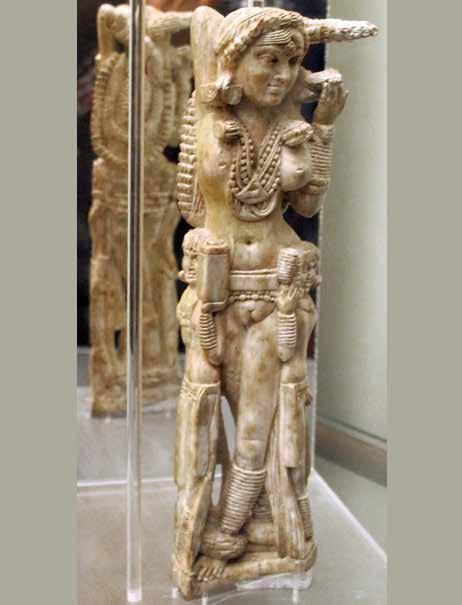
Therefore, I say it’s a matter of origin, and not really hard-core differences around concepts. Moreover, in the arc of human existence, we still feel the impact of the last 200 years of European colonialism and are only now emerging into a vibrant post-colonial world, where technologies like the internet are enabling the sharing of knowledge, cultures, economy, so much more possible, and in a democratic manner. International Relations theorizing stands at such a precipice of real democratization and can strengthen its theoretical processes of explaining the world.
Disclaimer: The views expressed in this article are those of the author and do not reflect the official guidance or position of the United States Government, the Department of Defense, the United States Air Force, or the United States Space Force.
[1] “International Relations”, Britannica, n.d., https://www.britannica.com/topic/international-relations [2] Ibid.
[3] Budhaditya Ghosh, “Kautilya’s Mandala Theory,” The West Bengal National University of Juridical Sciences, n.d., https://ia600508.us.archive.org/30/items/the-philosophical-traditions-of-india-an-appraisal-raffaeletorella/Kautilyas_Mandala_Theory.pdf; also see P.K. Gautam, “Understanding Kautilya’s Arthasashtra”, World Affairs: The Journal of International Issue, 17/1 (Spring January-March 2013), pp. 30-37, https://www.jstor. org/stable/48535489
[4] He Lei, “Thoughts in The Art of War Inspires Contemporary China’s Defense Policies”, Global Times, November 01, 2023, https://www.globaltimes.cn/page/202311/1301002.shtml
[5] P K Gautam, “Kautilya’s Arthasashtra and its Relevance to Contemporary Strategic Studies”, United Service Institution of India, n.d., https://www.usiofindia.org/publication-journal/kautilyas-arthashastra-and-its-relevance-to-contemporary-strategic-studies.html; “Chanakya’s Arthasashtra Relevant to Understand Strategic Culture: Shivshankar Menon”, India Today, October 9, 2013, https://www.indiatoday.in/india/north/story/ chanakya-arthashastra-relevant-to-understand-strategic-culture-shivshankar-menon-213738-2013-10-08
[6] R. Shamasashtry, Kautilya’s Arthsashtra, 1956, Chapter 2: The Nature of Alliance, https://www.wisdomlib. org/hinduism/book/kautilya-arthashastra/d/doc366130.html
[7] Fr. Giovanni Carpini and Erik Hildinger, The Story of the Mongols: Whom We Call the Tartars, Branden Books, 2014.
[8] Bolor Lkhaajav, “Marco Polo and the Mongol Empire’s Strategic Diplomacy”, The Diplomat, November 13, 2024, https://thediplomat.com/2024/11/marco-polo-and-the-mongol-empires-strategic-diplomacy/
